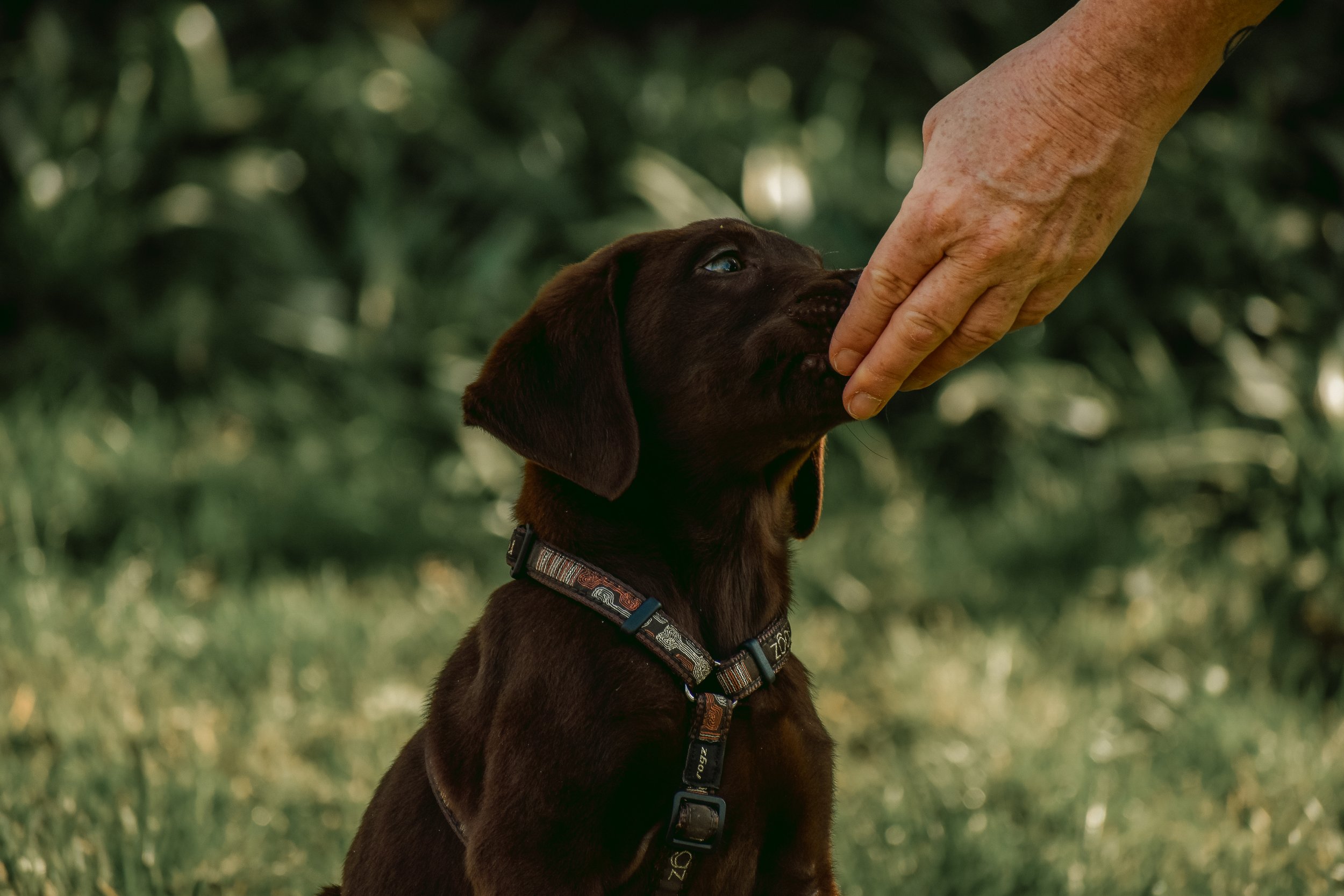
WHAT YOU WILL NEED
CLICKER
Do you need it? No, but it can speed up learning if used correctly. If you want to geek out on training, this is for you. If not, skip it.
TREAT POUCH
A treat pouch is a great way to make sure you have treats when you need them. Leave it next to your leash and you will be set!
TREATS
Bil-Jac makes a variety of amazing treats (the dogs agree) and these are no different. Great for dogs that love peanut butter!
NOTE: All products have affiliate links, which means I earn a small commission on each item purchased from the links. I appreciate your support and wish you happy training!
HOW TO SOFTEN YOUR DOG’S MOUTH
Some dogs are a little too enthusiastic when taking treats, and if your dog’s got a “hard mouth,” it might be time to teach them some manners. The key difference? Dogs with a soft mouth use their tongues to take treats, while hard-mouth dogs rely on their teeth. So, how do you teach them to be gentle? By making sure they only get the treat when they use their tongue or back off your hand. Let’s break it down.
Start with a treat in a closed fist. Resist the urge to pull your hand back if your dog starts nibbling—moving your hand around will just make them more determined to grab it. Keep your fist closed to protect your fingers (the most sensitive part of your hand) and to discourage your dog from biting. If your dog’s still trying to gnaw at your hand, press it against something solid, like your thigh or a wall.
As soon as your dog licks your hand or backs off, even for a split second, click (or say “yes”) and open your hand. Repeat this a bunch of times. Once your dog gets the hang of it, you can use this trick during training sessions.
Dogs tend to get more bitey during training because they’re excited and getting a lot of treats. If your dog starts using a hard mouth mid-session, deliver the treat with a closed fist and wait for them to remember their manners before handing it over.
People with hard-mouth dogs often hesitate to bring the treat all the way to their dog’s mouth, trying to avoid getting nipped—which makes sense! But here’s the thing: when you don’t bring the treat close, your dog feels the need to reach for it, making the situation worse. If you move slowly and tentatively, it gives your dog more time to get hyped up, increasing the chances of nipping. Instead, bring your closed fist to their mouth confidently and quickly—they’re less likely to bite that way. I get that it’s tough because getting nipped hurts, but this won’t improve until you change how you deliver the treats.
My clients often ask, “What should I say to get my dog to take treats gently?” The answer: nothing. The change in behavior comes from a change in understanding, not from a command. You want the gentleness to be automatic, not something you have to remind them of every time. There’s never a situation where it’s okay for your dog to bite your hand, so don’t give up the treat until they show some self-restraint.



